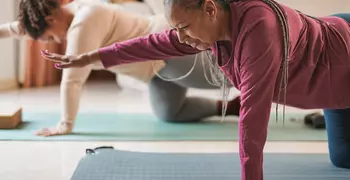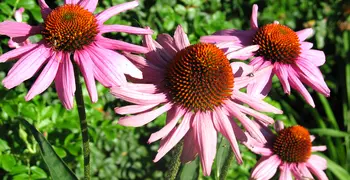Holistic Therapies for Children
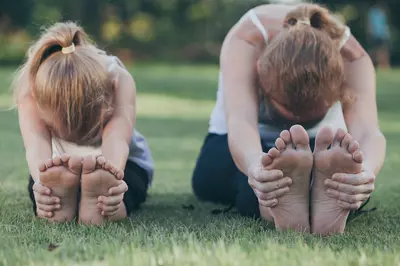
If you have children, the odds that they are going to use holistic therapies depend heavily on one factor: you. Do you use holistic (or, as some call them, complementary or integrative) therapies for your own wellbeing? Are you, for example, a meditator, a yoga practitioner, a chiropractic patient, or a user of dietary supplements? Then your children probably will be, too.
The 2012 National Health Interview Survey (NHIS) found that about 12% of children use holistic therapies, and their use rises among kids with chronic illnesses – over half of children with chronic conditions, in fact, use some type of holistic therapy. The most common uses are for back/neck pain, head cold, anxiety/stress, and ADHD.
Below are a few examples of holistic therapies commonly used by children.
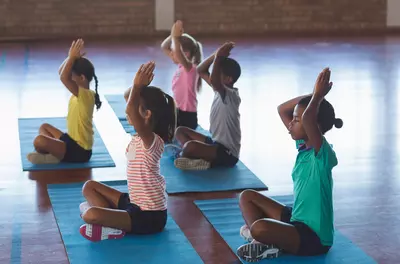
Yoga
Yoga is in the top-5 most common holistic therapies for children. It’s becoming easier to find yoga classes designed for children or families with children, and most children enjoy the practice. About a third of kids with chronic pain name yoga as their top choice of holistic therapy. Studies have shown that yoga is generally considered a helpful practice for children and adolescents who are dealing with physical and emotional or behavioral problems, with few adverse effects. The downside is the cost – yoga classes generally have a fee, not covered by insurance. One workaround is to look online for videos you can try at home, although you will want to make sure you are using a reputable source so that the recommended poses don’t cause strain or injury.
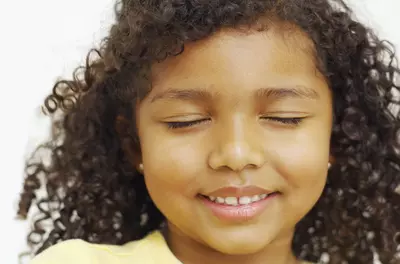
Guided imagery
According to the American Academy of Pediatrics, guided imagery can be a useful practice for youth of all ages, from very young to adolescent. It’s certainly one of most flexible therapies – it’s free and can be used anywhere at any time. Used to help manage stress and induce relaxation, imagery only benefits from the powerful imaginations of children. There isn’t much published evidence for the efficacy in children, but one small trial demonstrated a reduction in pain for children with chronic abdominal pain, and another showed guided imagery helped obese children make healthier choices.
Caution: If you are using with children with a history of trauma, abuse, consult a mental health professional.
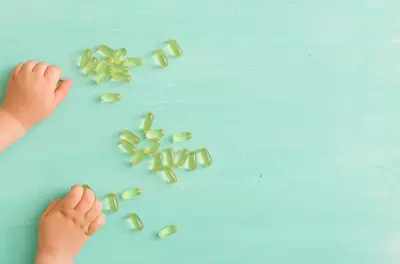
Dietary supplements
Fish oil is the most commonly used dietary supplement with children, followed by probiotics. Fish oil is strongly associated with full-term gestation and is crucial to the development of the brain, nervous system, and eyes. Studies have also suggested it might improve symptoms of ADHD. Probiotics are mainly used to help with diarrhea and abdominal pain.
As with other therapies, it is crucial that parents or guardians talk to their children’s healthcare provider before introducing any dietary supplements, and keep the provider informed about their ongoing use.
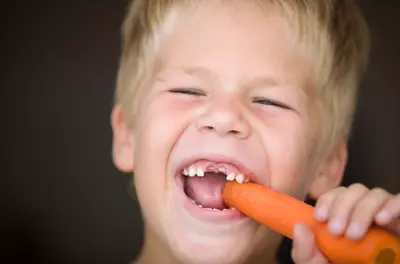
Nutrition
Yes, food can be considered a therapeutic tool! What we eat has such a profound impact on our bodies and minds that many consider food as medicine. Children become at risk for obesity and chronic illness when their diet consists primarily of processed foods, saturated fats, and sugar - just as any adult would be. Functional foods, such as fruits and vegetables, whole grains, and healthy fats and sources of calcium can have a positive influence on children’s physical and emotional wellbeing. One area of current study is the Mediterranean diet, which has been used in children to prevent obesity and even asthma, rhinitis, and eczema (though better, long-term studies are needed).
How to Use Holistic Therapies with Your Child
- Talk to your pediatrician or other healthcare provider for children before beginning new therapies, especially dietary or herbal supplements. A common assumption is that “natural” supplements are safe, but there can be contraindications. (For example, a child developed severe vitamin D toxicity because his parents tried to treat his autism with multiple supplements without consulting a physician.) Come to your appointment carrying all the information about the therapy you have, including any packaging, articles, or research studies. Not all pediatricians know about holistic therapies, so they might need to do some research before making an informed recommendation.
- Check out the evidence for therapies on your own before you try them. Anecdotal reports from friends about how effective they were are fantastic and very helpful, but a truly evidence-informed decision will also incorporate published research where it exists. If you’re not sure how to do that, ask your provider or start with Pubmed or NCCIH.
- Ask your child what works for them. If your kid is interested in yoga or meditation, you can help them explore these practices. However, don’t push it, especially if you are trying to help them with stress and anxiety. Forcing a new practice on a child can make them feel overwhelmed and cause even more stress.
- Try new things together. If you want your children to eat more vegetables and fruits, then make sure your plate looks like theirs. If you want them to reap the benefits of nature walks, go with them and notice how being among trees impacts your own wellbeing. Close your eyes with them and listen to a guided imagery recording together, then talk about how it made you feel afterwards.
In short, using holistic therapies with children is absolutely possible – and not always that different from using them as an adult. By partnering with healthcare providers, seeking the best evidence, and checking in with your children about their experience, you are more likely to get the best results.
McClafferty, H., Vohra, S., Bailey, M., Brown, M., Esparham, A., Gerstbacher, D. (2017). Pediatric integrative medicine. American Academy of Pediatrics Clinical Report. Retrieved from http://pediatrics.aappublications.org/content/early/2017/08/24/peds.2017-1961.
Vohra, S., King-Jones, S., Becker, D., Bethell, C., Culbert, T., McClafferty, H., et al. (2016). Mind-body therapies in children and youth. American Academy of Pediatrics Clinical Report. Retrieved from http://pediatrics.aappublications.org/content/early/2016/08/18/peds.2016-1896.
